How to check if my webserver is down and send an SMS if not
Having more supervision over your webserver has multiple benefits. It will decrease the down-time, make the troubleshoot easier and makes your customer more satisfied. You will learn how to setup a new alarm source and how to configure it. Also you will be able to create the routes for the alarm system. This solution only takes about 10-15 minutes to setup and this tutorial is detailed so you will have no problem following it. We are using the Ozeki Alarm System which is a market leader alarm system application which can be installed on Windows Linux and any Android device. Don’t waste any time. Let’s start the setup!
What is webserver monitoring
Webserver monitorinig is the procudure of downloading a webpage periodically, and checking if the content matches a set of rules. This procuedure is done automatically and if the website is down or the content is out of context, an sms alert can be sent to a mobile phone.
What is a website sms alert
A website sms alert is a text message sent to a mobile phone in case the website is down or the content is replaced to something not desired by the website owner.
How to check if my webserver is down and send an SMS if not (Helpful guidelines)
To check if my webserver is down and send an SMS if not:
- Start Ozeki Alarm app on your phone
- Login to Ozeki SMS Gateway in desktop
- Open Alarm System application
- Install Web server offline source
- Configure Web server offline source
- Create new Route for the alarm source
- Provide message sender address
- Enable connection logging
- Check the recieved alarm SMS
Send SMS if website is down (Video tutorial)
In this video, you will learn about how you can setup an automatic server checking system. The video is only 4 minutes long and very detailed. You will have no problem following the steps. It will give you a glimpse of how easy it is to use the Ozeki Alarm System and how many functions it offers. You will learn how to setup an alarm source that sends you an SMS in case of an error.
How does Mobile Monitoring system works?
This solution will check your webserver periodically and send you a notification through an SMS message if it is offline. This system uses a mobile phone and tries to download data from the server in every 5-10-15 seconds based on your preferences. It will then use the Ozeki Alarm system to send you an SMS.

How does PC Monitoring system works?
This solution uses a PC with Ozeki Alarm System running on it to check the status of your webserver. You can customize the period in which the Alarm system will perform a check. Then if the server is offline, the Ozeki Alarm System will send you an SMS through the Ozeki SMS Gateway.

Start the Alarm System
To setup the mobile monitoring system, you need to launch the Ozeki Alarm System mobile app. After launching you will be presented with the screen you see on Figure 3. As you can see the Start button is not enabled yet. The system will take some time to boot up. As soon as it has started the button will turn into green.
To configure the system you need to click the IP address located under the Desktop login title to open a new browser page where you can login and change the settings. Memorize or copy the username and the password visible below the IP address. You can open the webbrowser on the mobile phone, or you can use a Windows PC in your network (LAN). To be more efficient a desktop browser is a better option to access the configuration.
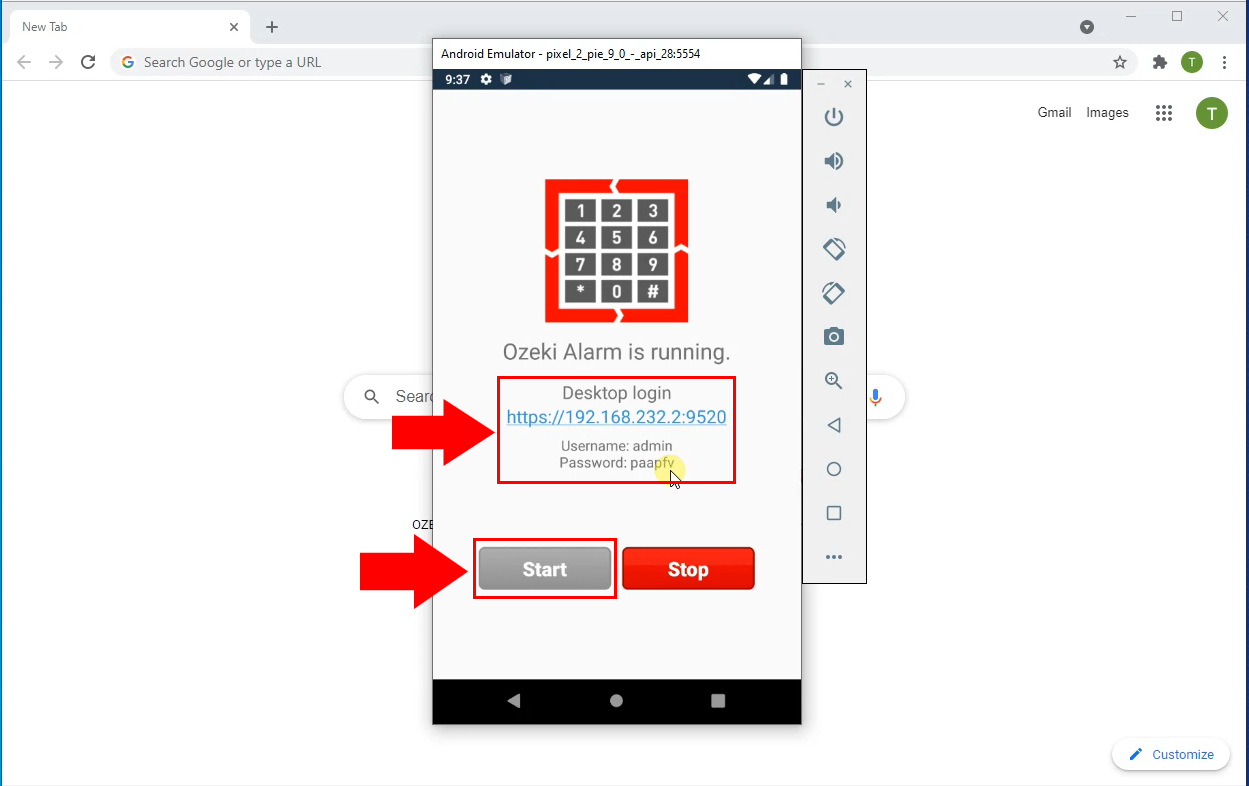
Login to configure the system using your browser
Configure the system in your webbrowser. The first form you will see when you open the configuration page, is a login prompt. In this login prompt, provide the username and the password that you have seen in the android app. After you have entered your login credentials you have to click OK.
You can change the settings of the Ozeki Alarm System android app from our computer if you use a desktop browser. You can also change the settings if you use the local webbrowser running on your android phone. The procedure is the same, although you will experience some inconvenience due to the small screen size of mobile devices.
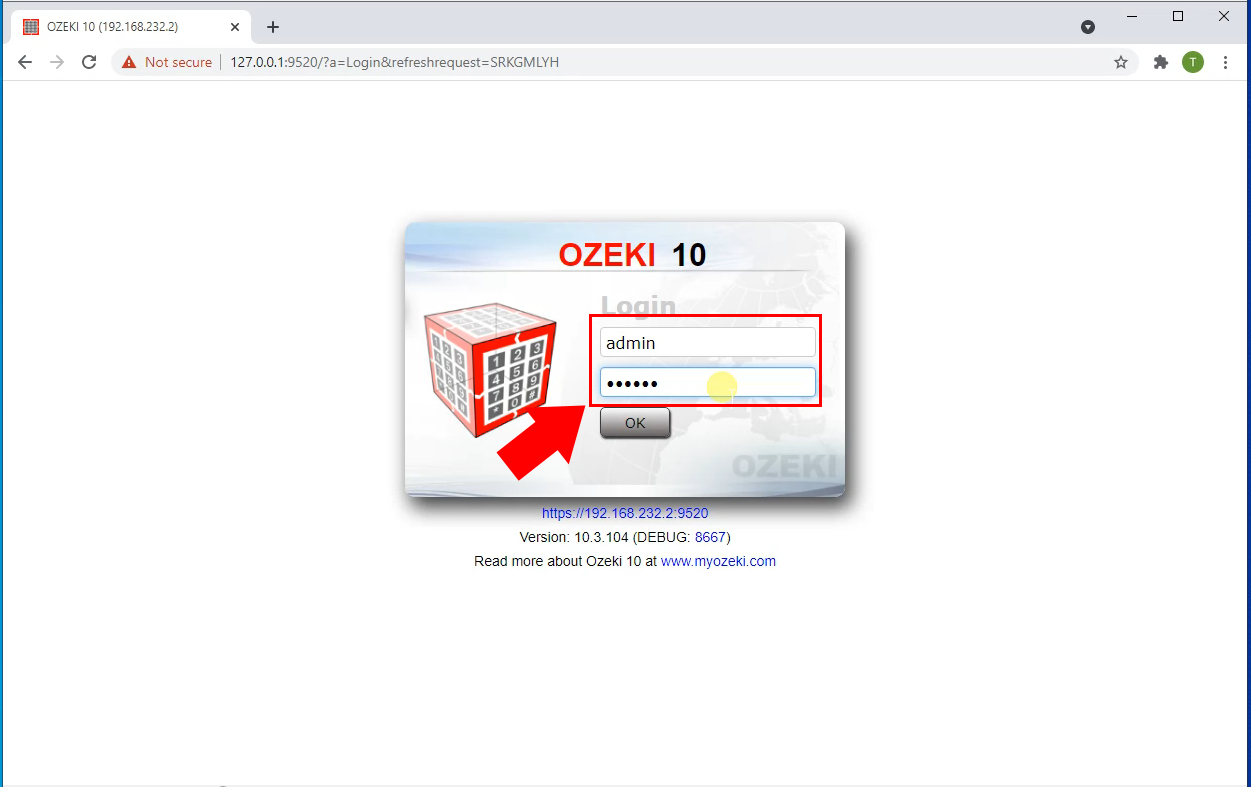
Open the Alarm System application
Now you are logged into the Ozeki system. Click the Alarm System icon located on the Ozeki desktop (Figure 5). The icon can be found below the recycle bin, if you start with a clean installation. This icon will launch the alarm system application. In this app, you will be able to customize the alarm system preferences that you will be using on your android device.
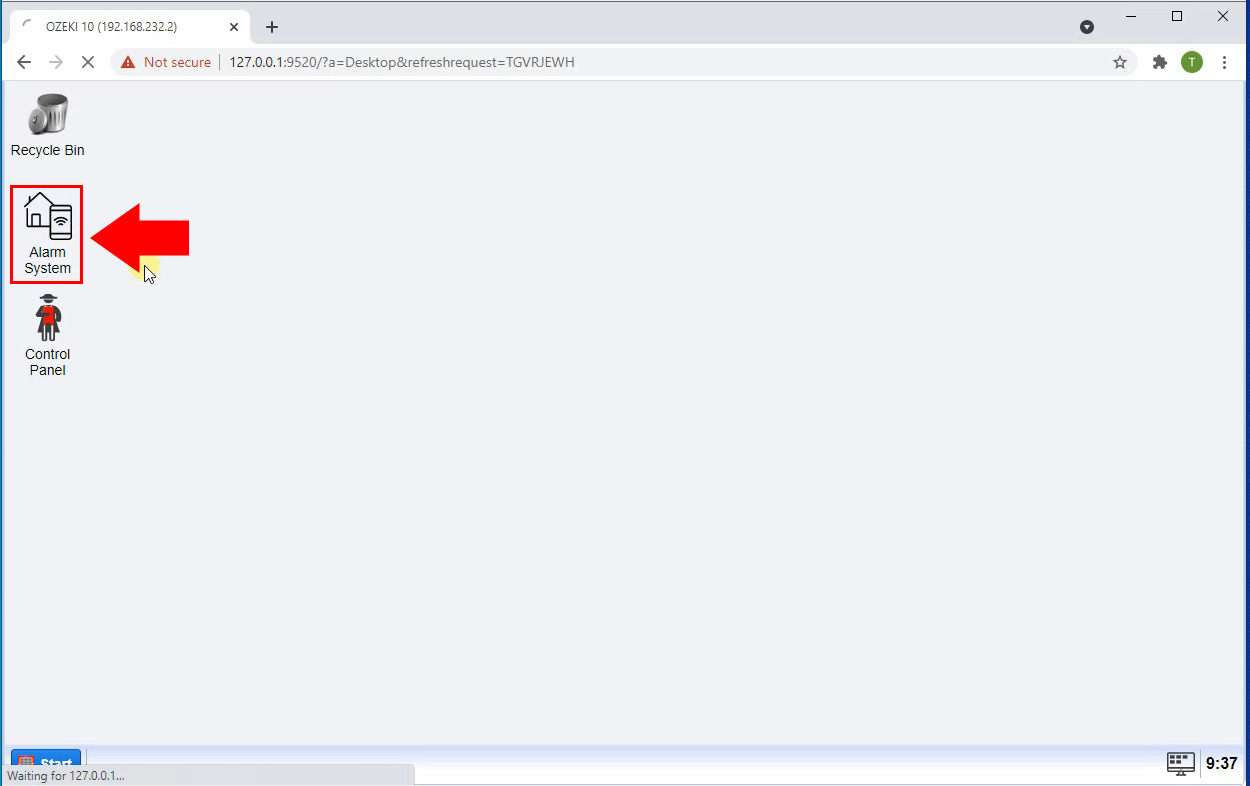
Install a new alarm source
In the Alarm System application, look for the Sources button located on the toolbar, next to the Routes button. Click it and it will open the Install alarm source installation list. Here you can see all the notification sources you can install. Look for the Web server offline list item to start setting up a system that monitors your webserver (Figure 6). Click the blue Install button to proceed.

Provide data for the alarm source
In the next step, you will configure the alarm source. You need to provide a URL that the system will try to download data from. Type in the URL to the textbox located in the Webserver groupbox. Below it you will find the Downloaded groupbox. There you need to type two texts, that the system will scan for in the response of the webserver. If the first Text to look for is in the response, the server works correctly. If the second Text of error is found, the system know that the webserver is currently offline. Under these settings, you can find a Frequency groupbox where you can set how frequent should the system check the webserver (Figure 7).
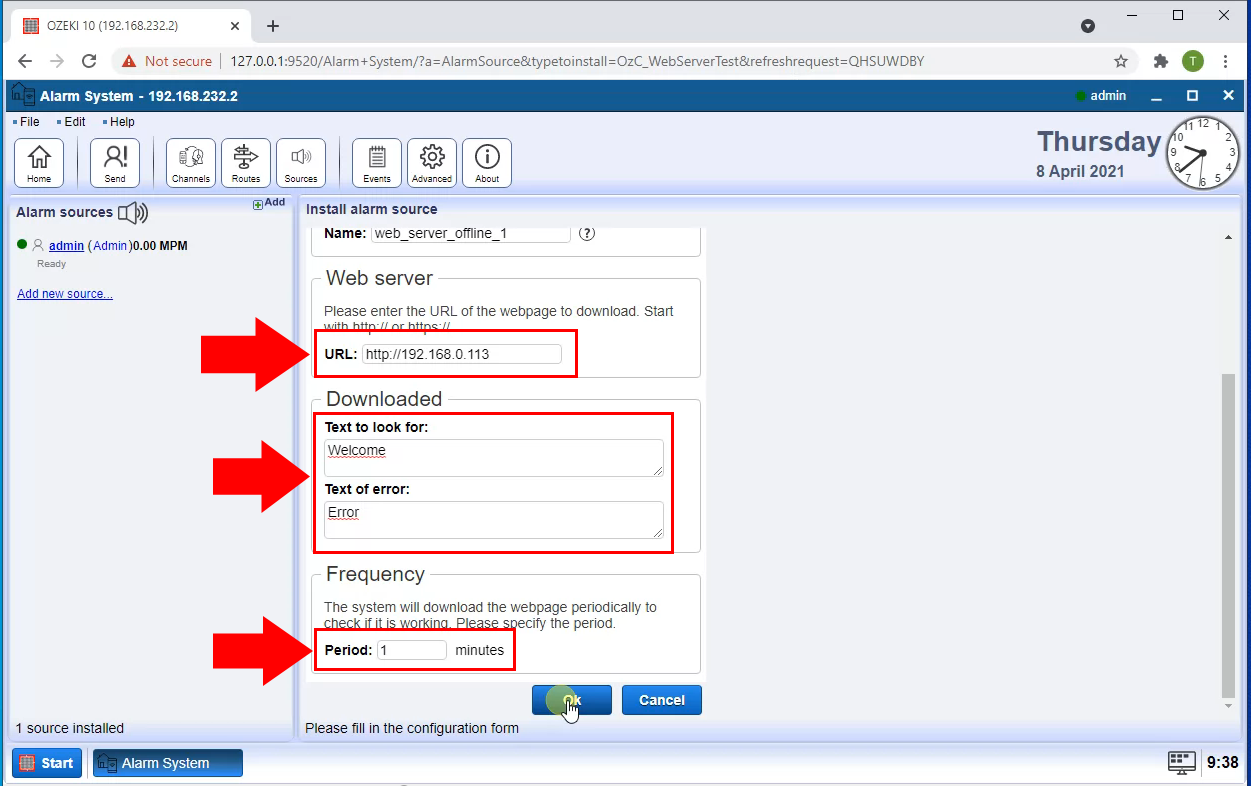
Create a new route
Now you need to create a route that can be used to send the SMS in case of an error. To do so, click the Routes button located on the Toolbar next to the Sources button. Now you will see a Route details panel on the right side of the screen. In the From textbox, you will need the address of the alarm source. In the To section, you will need the address where you wish to send the notification message (Figure 8). Click the Ok button after you have finished the setup.
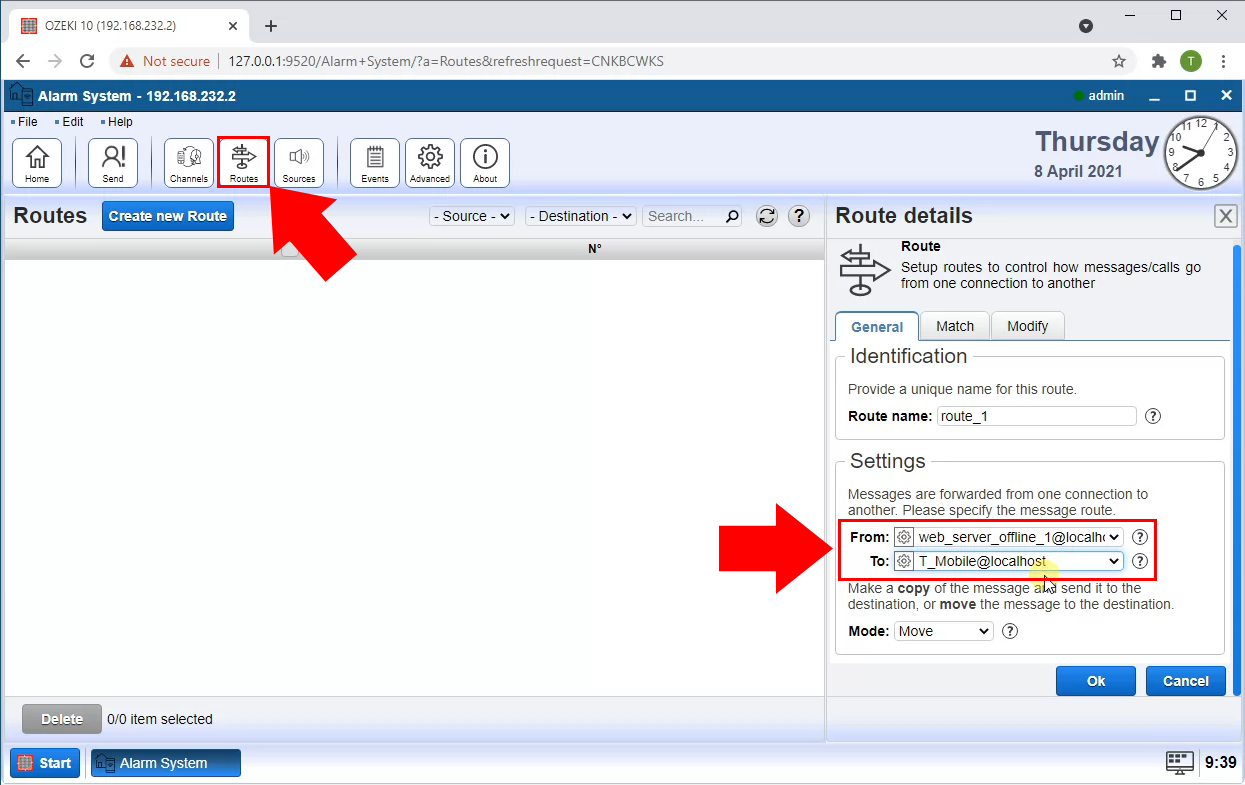
Configure the address
In this step, you will be able to replace the senders address with something. This means that on your phone, this will be visible as the address of the sender. Provide a phone number that you will recognize in case of an incoming SMS message (Figure 9).Click the Ok button if you have finished with the setup to proceed.
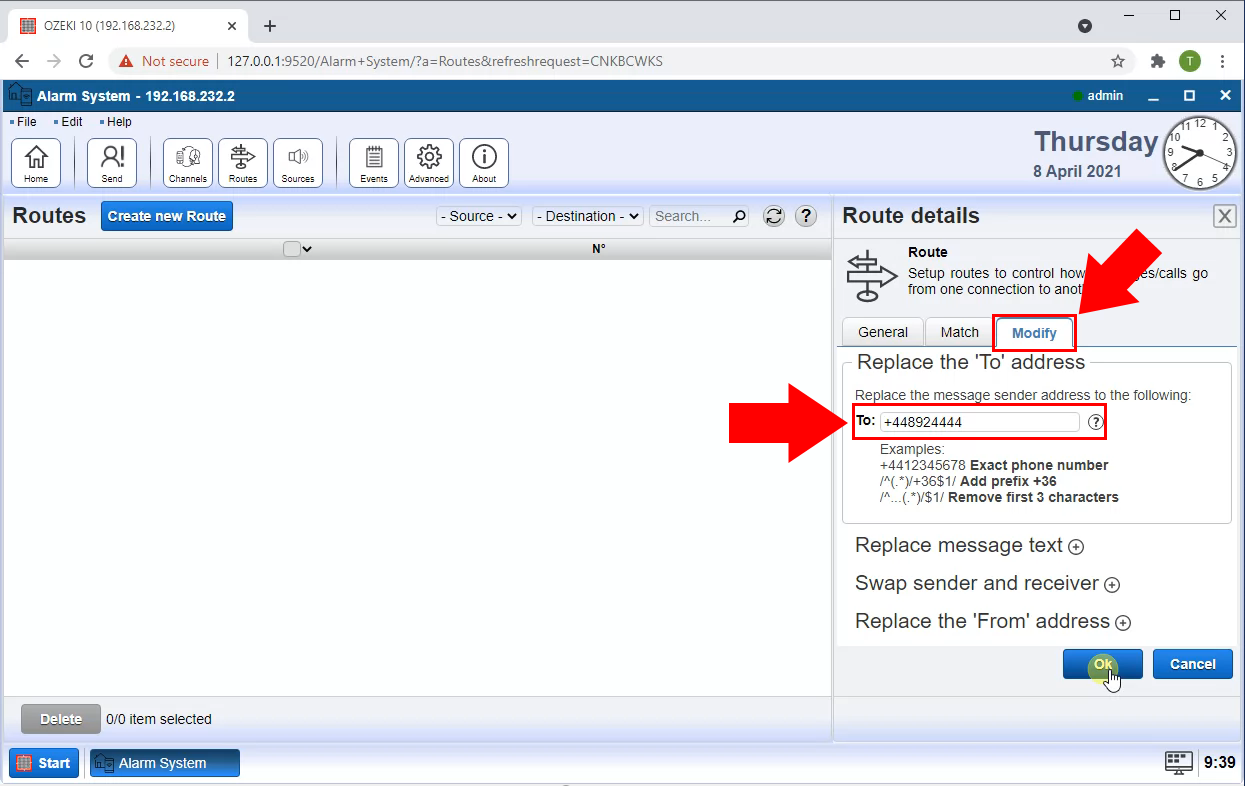
Turn on Logging
To have event records of the connection, you need to turn on logging for the connection. Open the receiver connection’s detail page and look for the Advanced tab. From there, you need to check all the checkbox in the Log level groupbox (Figure 10). This way your connection will store information about all the communication events, all the events connected to the android application and all the messaging events. It will even attach this information with the messages.
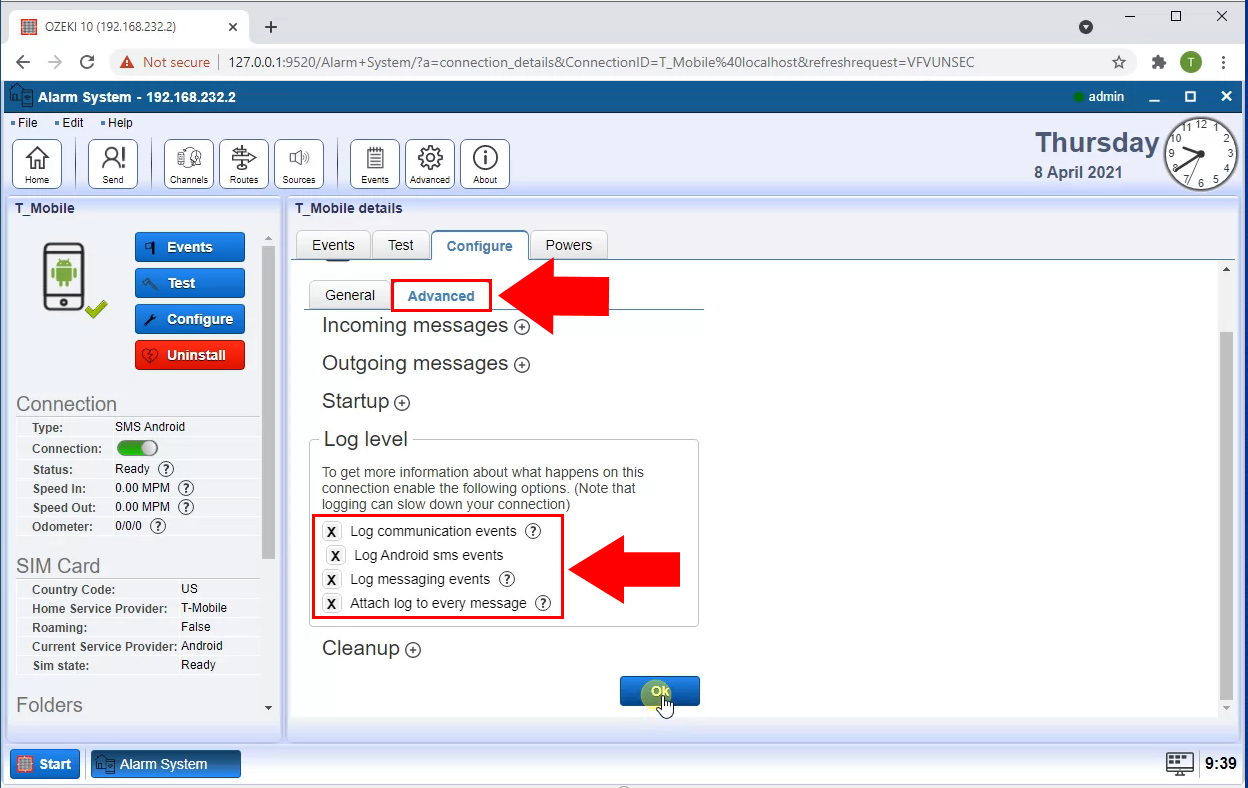
Error detected
As you can see on Figure 11, the alarm system checks the webserver on the provided URL. In this example case, the server was offline so the alarm system detects it and comes back with an offline response. It means that the Ozeki SMS Gateway will now try to send an SMS notification about the error.
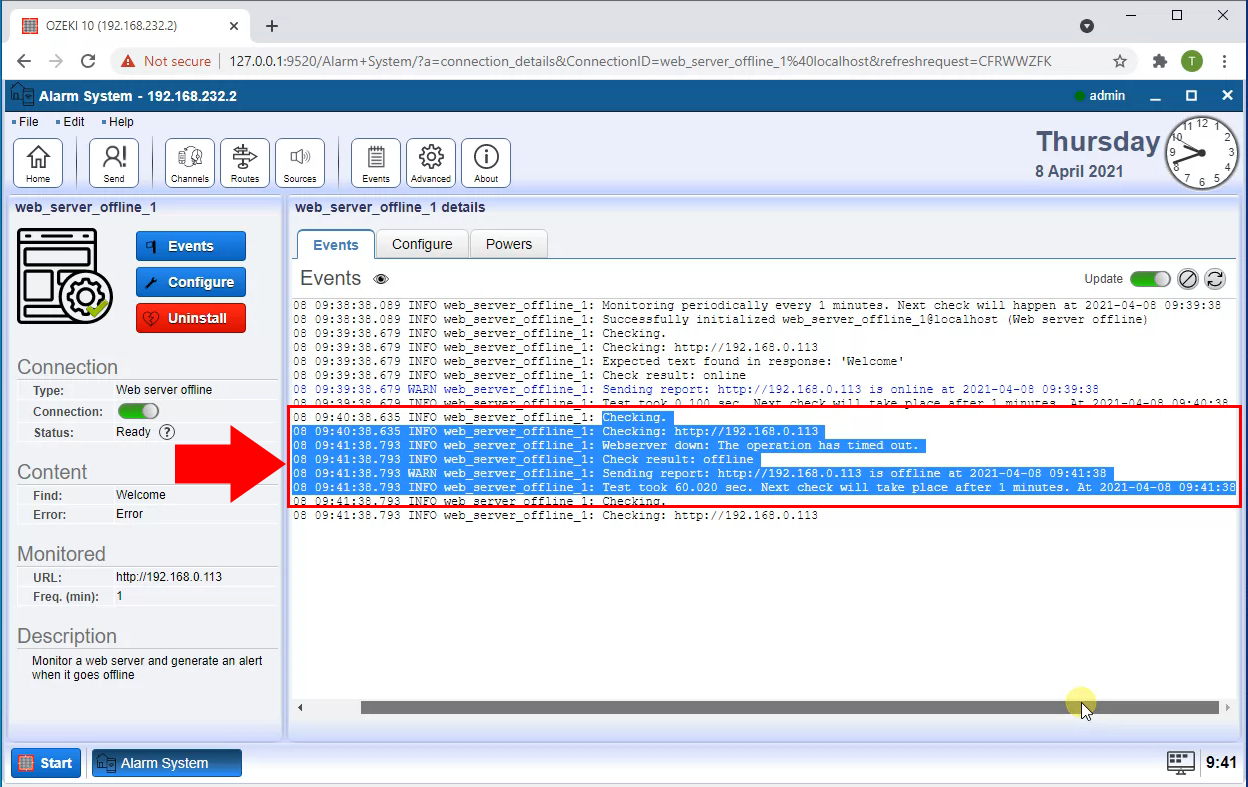
Message sent
On Figure 12, you can see the Events tab of the message sender connection. As you can see it received the request to send the message and tried to do so with the sender address modified to the provided one. On the last record you can see that the message was submitted.
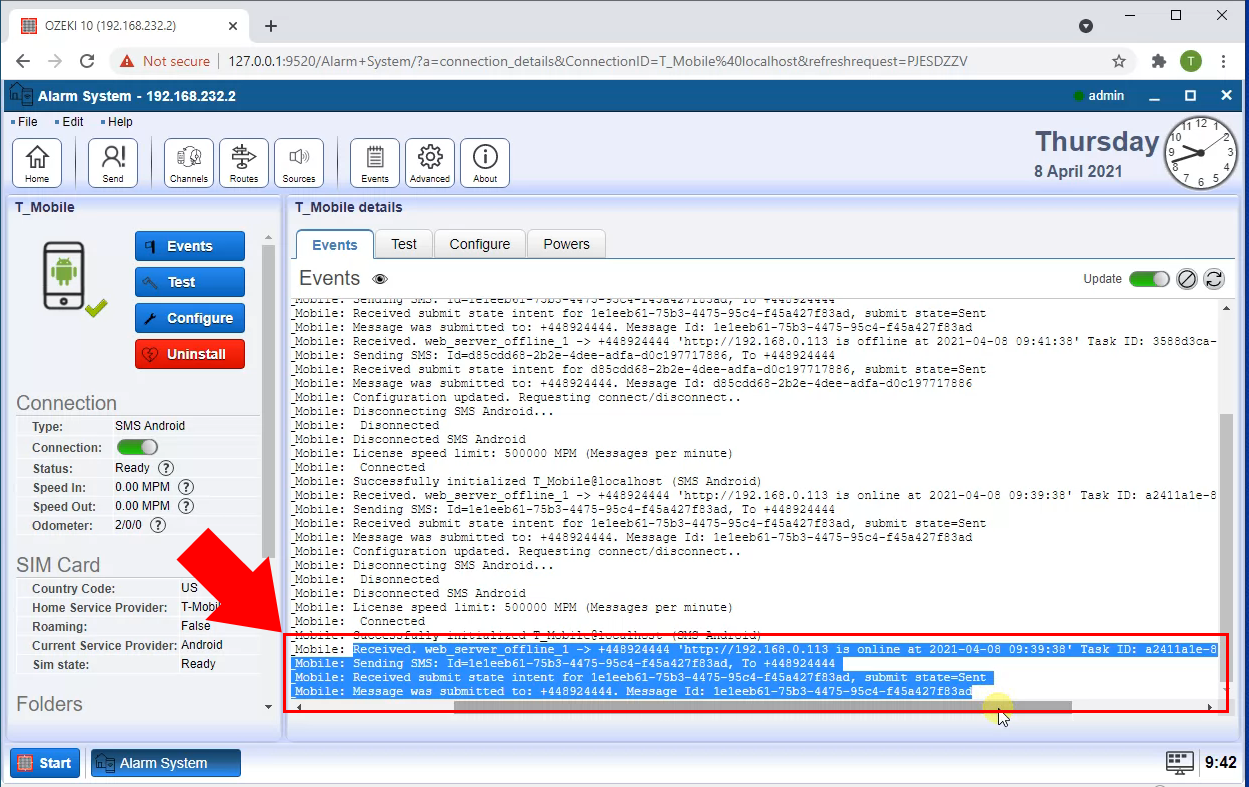
Summary
This guide gave you information on how to setup a website monitoring service. If your organization operates a website, this service will make sure you detect problems earlier than your customers. This is crucial in preserving the reputation and reliability of your business. The solution presented in this document detects that both problems: the website is not accessible at all and the website content is replaced to something unacceptable. If the problem is detected it sends an sms to the mobile phones of the relevant personal. They can react and fix the problem immediately.
Other similar solutions are provided by Ozeki. For example you can configure the Ozeki Alarm system to send an e-mail if the sebsite is down or your can dial the same security dispatcher center that is responsible for building secruity. The security dispatcher center will receive the alert about website down in the form of a contact ID alert message.
If you have not already done so, now it is time to download Ozeki Alarm, and setup this solution on your Windows PC!
